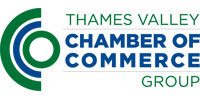(last updated July 2019)
What has been happening in the osteopathic sector
Osteopathy is the detection and treatment of problems with the joints, nerves, ligaments and muscles. The treatment involves using the hands to identify abnormalities. Through the use of stretching, mobilising and manipulation, the osteopath helps the human body's ability to heal itself. Since May 2000, the use of the title 'osteopath' has been protected by law and it is an offence to practise without first being registered with the General Osteopathic Council. A mandatory continuing professional development (CPD) requirement was introduced by the General Osteopathic Council in 2004 and all osteopaths must complete 30 hours of CPD every year. At least 15 hours of this must be spent interacting with other professionals.
In March 2016, after a period of consultation, the General Osteopathic Council introduced draft CPD guidelines for meeting continuing fitness to practise requirements. After trialling the new scheme to ensure that it met the aim of helping patients to feel confident that their osteopath is competent and equipped with up-to-date knowledge and skills, it was introduced with effect from autumn 2018.
According to the NHS, osteopathy is one of the most popular complementary and alternative medicines. Many GPs endorse its use and recommend that patients seek osteopathic treatment - according to the NHS, osteopathy is made available in around 25% of all GP practices. However, relatively few GPs are able to fund osteopathic treatment via the NHS, although they are growing in number - according to the General Osteopathic Council, over 80% of osteopathic treatments are self-funded with around 10% of treatments funded by private health insurance.
The House of Lords recently debated the whole issue of complementary and alternative medicines and came to the conclusion that all major forms should be integrated into the mainstream healthcare system. (Although the NHS classes osteopathy as a complementary therapy, most osteopaths consider themselves to be primary healthcare professionals.) A significant step towards achieving this for osteopathy was the launch of the NHSTA Directory of Complementary and Alternative Practitioners, a central source for GPs to find details of osteopaths working directly or indirectly with the NHS. Using this, a GP was able to quickly access the qualifications, fees charged and services offered by each osteopath in the Directory and decide which would be most suitable for the patient. In 2009 the National Institute for Health and Clinical Excellence (NICE) issued new guidance for managing lower back pain. Among other treatments NICE recommends spinal manipulation - for example osteopathy - to effectively achieve this. The roll out of Any Qualified Provider in England in the 2010s has seen a shift in the way that patients who qualify for a personal health budget can access care. Rather than having to be referred into the NHS, the patient is able to choose from NHS and private providers who meet the qualifying criteria, in theory enabling more patients to have their osteopathy treatment funded by the NHS. Details of registered providers are listed on the NHS Choices website.
According to the General Osteopathic Council, at 1 September 2018 there were 4906 osteopaths in the UK, of which over 90% are in England, about 3% in Scotland, the same in Wales and less than 1% in Northern Ireland. The majority of patients (80%) seen by osteopaths self-refer, although the number that are referred by GPs is growing every year as osteopathy and other complementary and alternative medicines are accepted into the mainstream. As an indication of osteopathy's growing acceptance into the mainstream, osteopaths were recruited into the medical team that served athletes at the London Olympics in 2012.
Keep up to date with developments
The General Osteopathic Council is the UK-wide statutory body that has regulatory powers. Its main aims are protecting patients and ensuring the development of the profession and promoting the profession. Its roles include maintaining the professional register of osteopaths, setting the standards of practice and conduct, assuring the quality of education and ensuring CPD. The Osteopath is the official journal of the Council.
The Institute of Osteopathy (iO) is the leading professional body and is dedicated to supporting its members, promoting opportunities for individual and professional development and promoting high standards of education and research. The iO publishes the Osteopathy Today journal and organises an annual convention and trade exhibition.
Visit the General Osteopathic Council and iO websites for more information.
